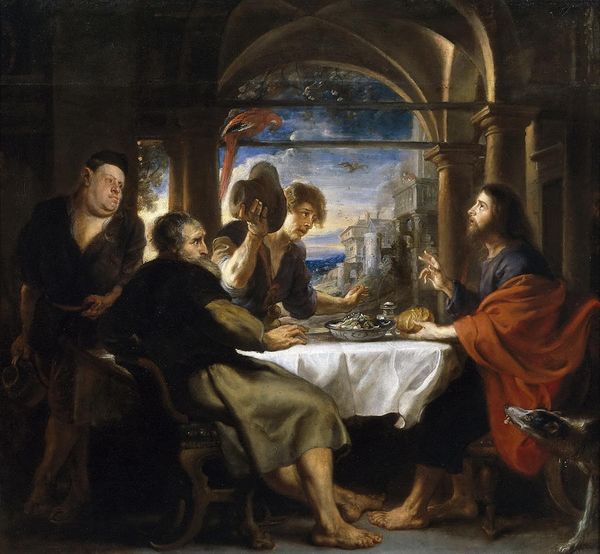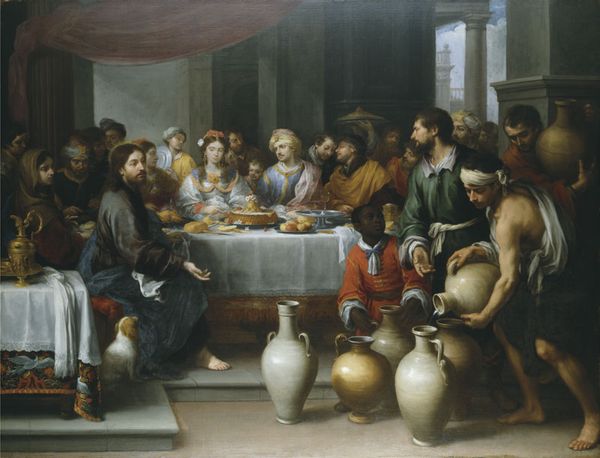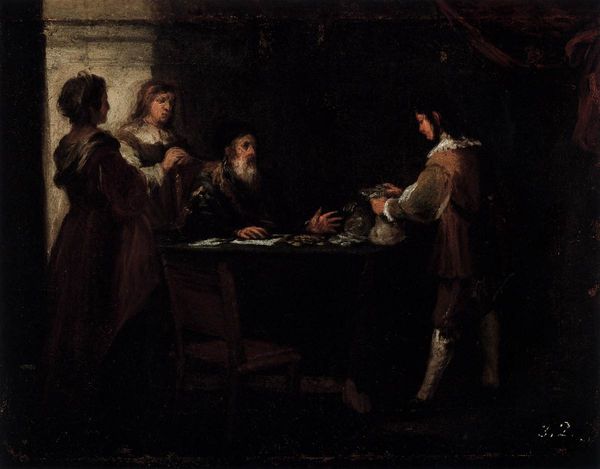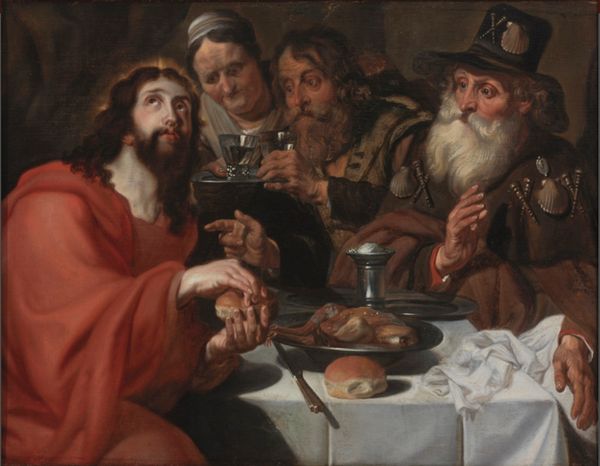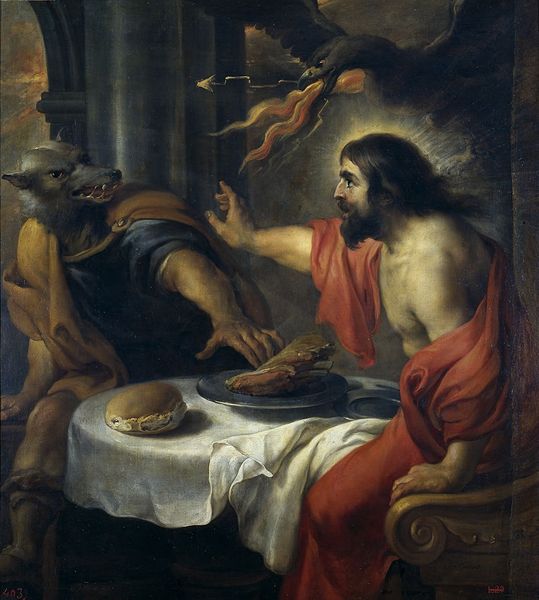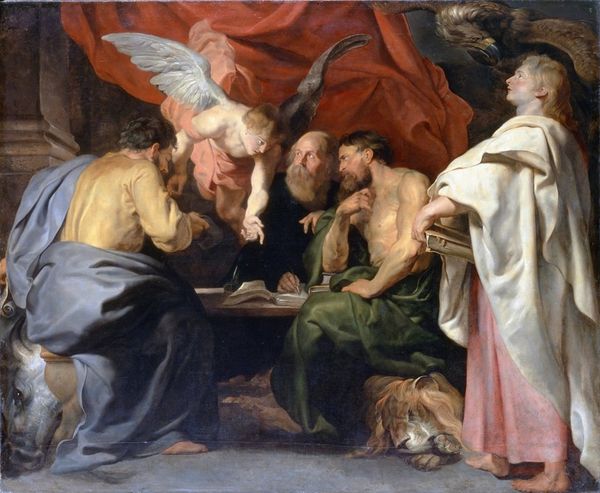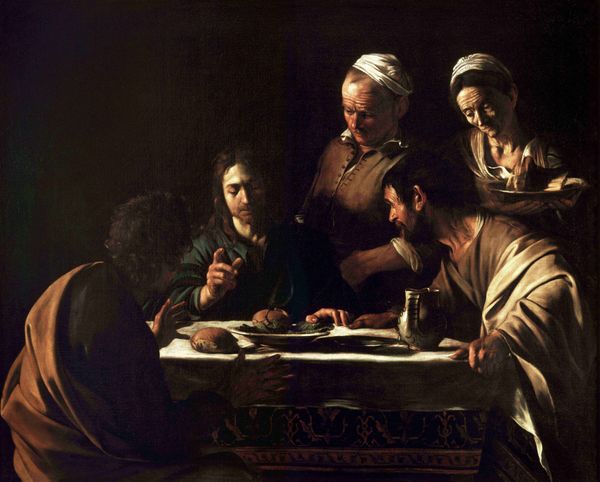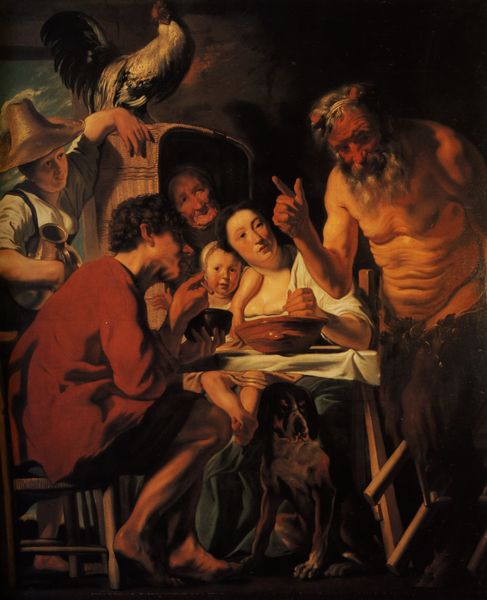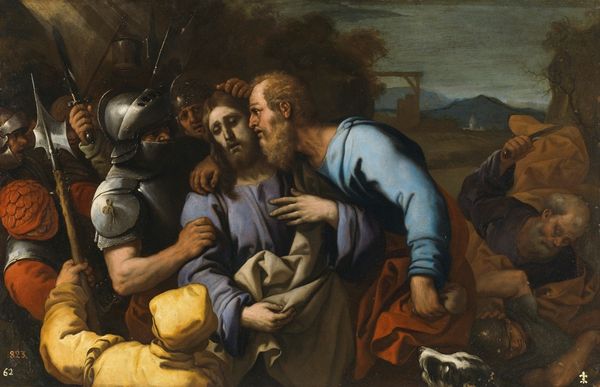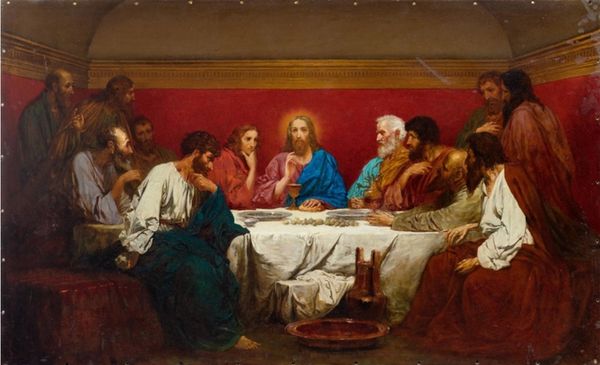
painting, oil-paint
#
baroque
#
painting
#
oil-paint
#
figuration
#
oil painting
#
history-painting
#
expressionist
Copyright: Public domain
Curator: Looking at Domenico Fiasella's "Abraham and Three Angels" I immediately notice the rather sombre mood; even with those divine figures, the scene feels weighty, doesn’t it? Editor: Absolutely. Before diving too deep into its emotional qualities, I'd like to ground us. The artwork depicts the biblical story from Genesis, where Abraham welcomes three strangers who are, in reality, angels sent by God. It is a theme that historically, served as a lens for concepts surrounding hospitality, divine intervention, and promise. Curator: Right, hospitality as a performance. Considering this dynamic, notice the way the painting visually segregates roles. Abraham, hunched and subservient in the lower foreground offering food. Then there is a division created, spatially between Abraham and his visitors. Their interactions feel less like a friendly encounter and more a calculated transaction. How might class, labor, gender intersect within this context? Editor: It's astute to analyze it that way. Abraham's offering is happening, quite literally, on uneven ground as the seated angels' bodies tower higher in the picture plane and cast their glance onto the other people depicted within the composition. It certainly isn't an even exchange. Do you think that tension stems from the art world's own class dynamics at the time? I see hints of a struggle in visual codes meant to promote particular social ideologies and norms, but being subverted perhaps by more subtle cues. Curator: It is also necessary to acknowledge the visual representations that place a significant difference in race and sex for a fuller picture of our modern day readings, such as those that emphasize hegemonic power structures. I want to bring awareness to those viewing to reflect how we, ourselves, have transformed from what once may have simply meant the story about the importance of "welcoming strangers." Editor: I agree wholeheartedly. Examining these power dynamics within history gives context and meaning to art's ability to incite dialogue today. We recognize there are several possible intentions behind "Abraham and Three Angels," depending on when, where, and how you read this baroque painting. But this layered approach that takes on different perspectives makes sure none are viewed within a vacuum. Curator: This nuanced context helps unlock richer understanding for contemporary viewers as well as ourselves.
Comments
No comments
Be the first to comment and join the conversation on the ultimate creative platform.
